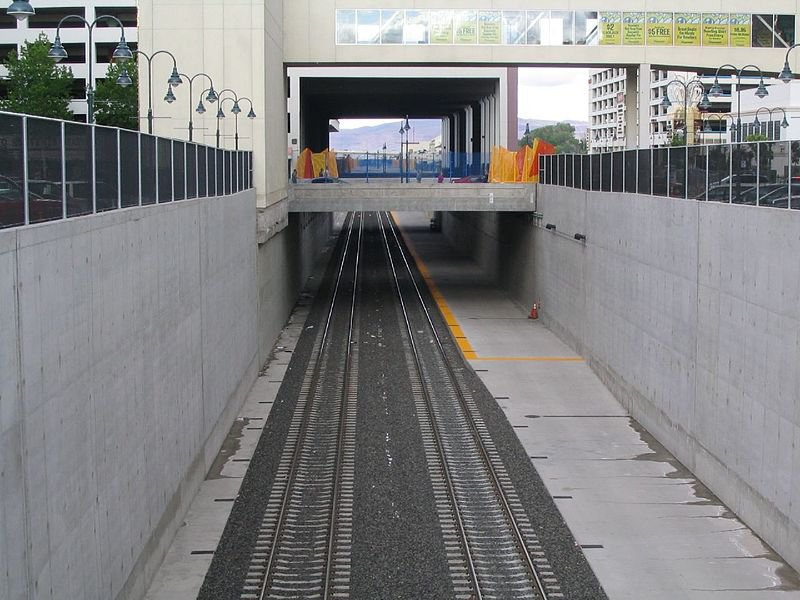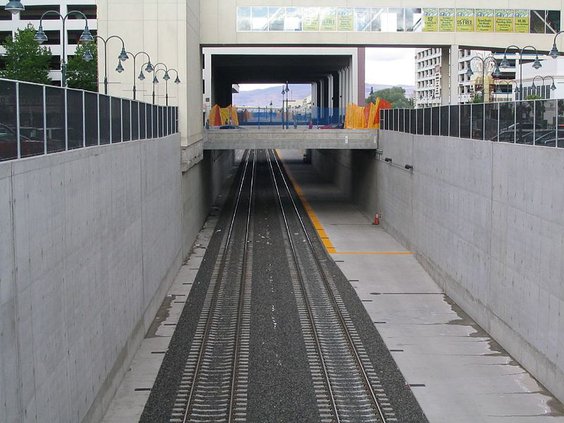Declaring the “railroad was here first” while noting the city can ill-afford to spend upwards of $100,000 to start another project at this time, Mayor Ben Cantu led the charge to derail a plan to study options to look at alternatives for traffic at 12 railroad crossings in Manteca.
Councilman Gary Singh suggested that the San Joaquin Council of Governments might be open to funding a study — the first step that could lead to securing state or federal sources of money to construct a grade separation — if the crossing has regional significance. That would likely apply to the Airport Way corridor.
The council unanimously agreed to pull the plug on issuing a request for proposals from consultants to do an in-depth analysis of all the grade crossings in Manteca in light of the economic impacts of the pandemic and the drain it is expected to have on city finances. The analysis would have included an evaluation of the characteristics of all grade crossings in Manteca, including rail traffic, truck and motor vehicle traffic counts, safety factors and other related considerations.
Cantu made it clear he doesn’t have much stomach for some solutions that people think the city should consider pursuing to make traffic flow easier in Manteca when it comes to crossing the railroad tracks. He specifically referred to the proposal to create a 30-footr deep trench through Manteca to lower the tracks and build bridges across it that based on similar projects elsewhere could easily surpass $1 billion.
“(A trench) is beyond the financial scope of the city,” Cantu said.
Councilwoman Debby Moorhead, who sits on the San Joaquin Rail Commission that oversees the Altamont Corridor Express service, noted experts have told that agency Union Pacific is not interested in getting involved with more trench projects due to significant dewatering issues they ran into in Reno.
Reno has a high water table with non-potable water just like Manteca does. The rail commission is in the process of designing a project that eliminates an at-grade crossing of Union Pacific and Santa Fe lines in Stockton to improve rail traffic flow.
Cantu added that some of those with issues with trains “failed to look over their fence” when they were buying homes and now want the city to address noise issues.
Councilman Dave Breitenbucher, who currently lives within 100 yards of the tracks in Cantu’s childhood home and once lived in Cherry Lane Apartments that back up to the railroad, said trains are part of everyday life in Manteca. He noted most people get used to the noise and will opt to use other crossings where a sidelined train waiting for another to pass blocks specific crossings.
The council did not close the door on eventually pursing underpasses or bridges at select crossings at some time in the future.
Based on planned expansion at the Union Pacific Railroad intermodal facility sandwiched between Lathrop and Manteca that places truck trailers off and on especially designed flatcars for long distance hauling, there could be up to 83 more trains coming through Manteca on two rail corridors — one that runs along the western city limits and the other that slices through Manteca at a diagonal.
On the line cutting Manteca in half, train traffic — including Altamont Corridor Express trains that will start running to and from Ceres in 2023 — could triple from an average of 20 a day to 60. That is the equivalent of a train on average every 24 minutes as opposed to the current average of once every hour and 12 minutes.
Union Pacific trains that can be as long as 8,000 feet are the bane of virtually every motorist trying to cross Manteca will end up compounding current traffic issues. The situation is made worse by the fact Manteca is growing at 3.4 percent making it one of the fastest growing cities in California. That means vehicle traffic as well as train traffic will increase.
The City Council in January decided they wanted to see what the options are in terms of separated crossings, rough costs, and funding sources.
They instructed staff to return with a request for proposals so the city can enlist a firm with expertise in addressing rail separation issues.
The city has dismissed the idea of pursuing wayside horns for the expressed purpose of reducing train horn noise after finding out that engineers who have the option to blast horns at such crossings often do so especially in areas where they are passing through communities at high speeds.
Expansion plans for the Union Pacific Railroad intermodal truck-to-train facility sandwiched between Manteca and Lathrop will increase container truck traffic by 83 percent at completion. That will have a corresponding increase in train traffic through Manteca from 52 a day now to 135 if the intermodal facility is eventually maxed out.
Manteca has 14 crossings within the city limits that will be impacted by the increased intermodal movement — three on the Oakland line that also is used for Altamont Corridor Express commuter trains and 11 on the Fresno line. One of those 11 crossings — Austin Road — will be replaced with an overcrossing in the first phase of the Highway 99/120 Bypass interchange upgrade project breaking ground in 2022.
Union Pacific expects the Oakland line — that impacts the Louise Avenue, Yosemite Avenue, and McKinley Avenue crossings — to see train movements go from 32 today to 75 or a 120 percent increase that also includes ACE trains going from 8 to 10 a day.
The biggest impact, however, is on the Fresno line that slices Manteca in half. The current daily train census will triple going from 20 trains a day to 60 including six ACE trains.
To contact Dennis Wyatt, email dwyatt@mantecabulletin.com





